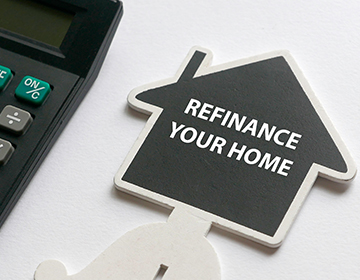
Refinancing Home Loan
Refinancing a home loan includes taking out another loan to take care of your original home loan credit. As a rule, mortgage holders Refinancing to exploit lower market financing costs, cash out a part of their value, or lessen their regularly scheduled installment with a more drawn-out repayment term.
Before you start the interaction, in any case, it's essential to know both the advantages and downsides of renegotiating and how the cycle functions.
Working Theory of Refinancing
The most common way of Refinancing a home loan is like the method involved with getting one in any case. You normally start by looking at and contrasting loan costs and different terms and different home loan banks to see which has the best deal. Then, at that point, you contrast that proposition and the particulars of your current credit.
Assuming your credit has improved since you were endorsed for your first advance, you might have a decent possibility of fitting the bill for better terms.
Additionally, look out for things like prepayment punishments, which can create issues not too far off on the off chance that you take care of the home loan early or renegotiate once more.
Motivations to Refinance a Mortgage
There are a few reasons property holders decide to renegotiate their home loan credits. Here is a portion of the best ones to contemplate:
- Lower financing cost and installment: If your credit has improved or showcase rates have dropped since you got your first advance, you might have the option to get a good deal on revenue with a lower rate and regularly scheduled installment.
- Cash-out: If you have critical value in your home, you might have the option to cash out a part of it with a renegotiate to take care of bills, finance an enormous buy, or purchase out an ex-companion in a separation.
- Change rate type: If your unique home loan has a customizable rate, moving to credit with a proper rate can assist you with keeping away from market vacillations.
- Change advance term: You can commonly fit the bill for a lower financing cost assuming that you abbreviate your credit term from, say, 30 years to 20 or 15 years. Doing as such can likewise get a good deal on interest over the existence of the credit. Assuming you extend your credit term, you might possibly bring down your regularly scheduled installment.
Types of Refinancing
There are three general kinds of Refinancing advances you can apply for: rate-and-term, cash-out, and trade-out.
Rate-and-Term Refinance Loan
With this sort of credit, the objective is to change the financing cost, advance term, or both without rolling out any improvements to how much the advance. This choice is ideal assuming that you're attempting to get a good deal on your regularly scheduled installment or change your credit from a movable rate to a proper rate.
Cash-Out Refinance Loan
As the name proposes, a money-out Refinance includes changing out a part of the home's value. Doing as such outcomes in a higher advance sum, with the distinction regularly equivalent to the sum changed out.
While a money-out Refinance can assist property holders with getting the money they need for specific exercises, it commonly brings about a higher regularly scheduled installment and financing cost than a rate-and-term renegotiate credit.
Cash-In Refinance Loan
Significantly less normal than a money-out Refinance is a money-in-Refinancing. This happens when the property holder renegotiates their home loan credit and offers cash that might be of some value to decrease their new home loan balance.
Money in Refinancing might merit considering to dispose of private home loan protection, fit the bill for a lower financing cost, or keep your home loan sum underneath specific cutoff points.